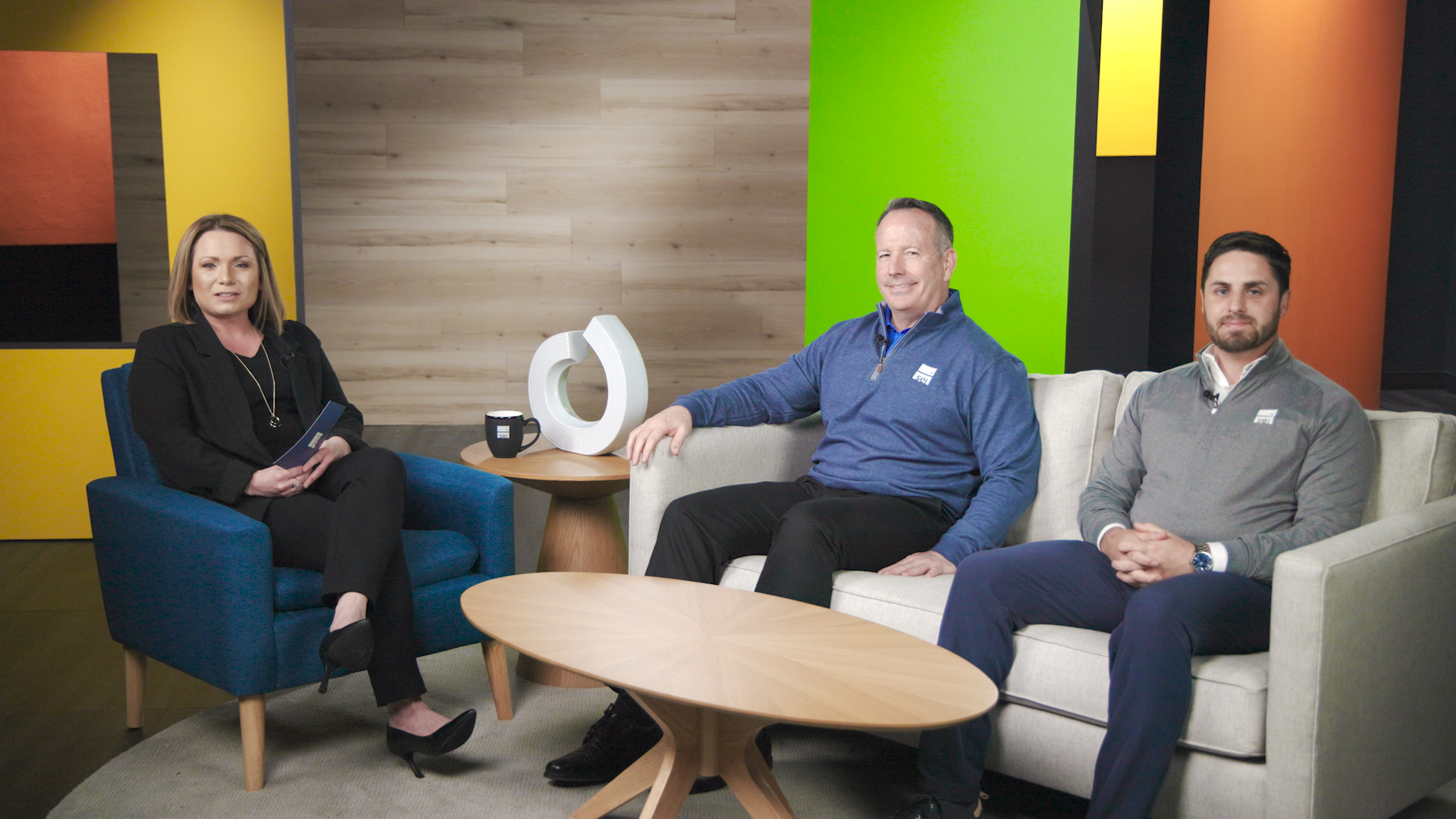Technology Gains and a Growing Market Bring New Importance to Alts
The following interview with Altigo co-founder Mat Dellorso first appeared in the September 2022 issue of Real Assets Advisor. In this interview, Mat...
6 min read
 John Rickman
:
January 26, 2023 at 12:49 PM
John Rickman
:
January 26, 2023 at 12:49 PM

The following interview with Altigo CEO Bill Robbins first appeared in the October 2022 issue of Real Assets Advisor.
In this interview, Bill discusses the evolution of Altigo, its subscription processing technology, how it differs from other platforms, and what he has learned as the platform has grown over the years.
Altigo recently crossed the $2 billion mark in alternative investments completed on the platform, proving the worth of electronic subscription processing technology. What have you learned in reaching this milestone, and what challenges do you foresee in reaching Altigo’s next goal or milestone?
We launched Altigo about three years ago in the summer of 2019, and looking back, a couple of things come to mind. The first thing I would note is that the technology for a platform like Altigo has to be extremely flexible to be scalable. You have to be able to meet the unique needs of multiple constituents like sales assistants, who do a lot of the order entry; financial advisers; the broker-dealer or the registered investment adviser firms; the funds and the funds’ sponsors; and all the service providers that support either firms or funds, such as custodians, transfer agents, and fund administrators.
Even within a category, different firms do things differently and have different business rules, so we’ve learned that most firms aren’t going to change their business practices in significant ways to adapt to your platform. Your technology has to be flexible enough to adapt to the way your clients want to do business. Our product roadmap is driven by our strategy, but it’s also heavily influenced—in terms of prioritization—by client demand. Added value from client feedback has been a major driver of Altigo’s acceleration in industry adoption.
We’ve also learned just how important it is to achieve critical mass. One of the key objections that we heard in the very early days of Altigo was that it didn’t have enough of the broker-dealer and registered investment adviser firms’ approved products on the shelf. For example, a firm that makes a dozen or more alternative investment products available to their reps and advisers would note that if we were missing a couple of their products—or in some cases, even missing one—they would be reluctant to adopt the technology platform because they didn’t want to have to maintain two separate operational processes running in parallel.
Achieving critical mass of firm-approved product made it possible for us to scale the adoption of the reps and advisers who use the platform. Then you start getting positive network effects as those firms begin driving all of their alternative investment business through the platform in order to recognize the benefits of automation.
The third item I would mention is that the platform has to be secure. There are a couple of components to that. One is technical: information security. We made a big investment to become SOC II, Type 2 audited to demonstrate the suitability of controls related to the policies and procedures, the technical architecture, and security that protects the confidentiality and privacy of the information processed by the platform. The other component of security is trust. You’re asking advisers, firms and funds to share some of their most sensitive information when they use a platform like Altigo, including information about their clients, brokers and selling group. So, there has to be a lot of trust in that technology and in the firm delivering that technology.
The industry still has some holdouts that are reluctant to embrace electronic straight-through processing technology. What would you say to those holdouts?
What I would say is, “We understand your concerns.” Technology adoption follows a very predictable life cycle across multiple products and industries. There’s a great book called Crossing the Chasm by Geoffrey A. Moore, which I would encourage every entrepreneur to read. It describes the unique characteristics of early adopters, the mainstream market, technology laggards and the factors that motivate their adoption of technology to gain a competitive advantage.
So, as this relates to Altigo and our industry in general, we’re at the point now where we’re crossing the chasm between early adopters and the mainstream. That’s one of the things that’s so exciting about our latest milestone. And so I would urge those firms who are evaluating straight-through processing technology to take a look at where Altigo is now and look at its features and the value it offers to the more than 200 funds and 195 broker-dealer and registered investment adviser firms using Altigo today.
Tell us about some of Altigo’s newest features and how do they reflect your vision of what straight-through processing technology should look like in the future?
We want to make it as easy to buy, sell and own an alternative investment as it is for a mutual fund. Our product roadmap is really driven by that strategy and, as we discussed, it’s also prioritized by client demand. One new enhancement, which is probably the most significant enhancement we’ve added yet, allows for full automation of home office review of firm documents related to compliance and sales supervision. This supervision/business rule evaluation tool makes the home office review of firms’ documents easier to manage than using yellow-pad checklists and spreadsheets, and we can work with clients to configure this new feature for each firm.
For the remainder of 2022, there are a handful of items that we’re working on that I am also super excited about. I think these features are going to be game-changers for the industry. They also revolve around delivering value to broker-dealer and RIA firms, particularly in the home office. They include:
These features represent a quantum leap forward in our ability to add value for the firms and the funds that we work with.
How is Altigo different from other companies that provide similar services?
The good news is that there are multiple options in the market, so it’s helpful for firms and funds to know how to evaluate the differences that are out there. First, I would look at the participants that are in the market and the product types they support. Broadly speaking, you can break down the alternative investment market into two groups: 1) private funds (private equity, private credit venture funds, and hedge funds) that are typically offered to qualified purchasers, and 2) what we call ”retail alts” or products typically available to accredited investors or below (registered, non-traded products including REITs, BDCs, preferreds, and closed-end funds; tax-advantaged structures, including qualified opportunity zone funds, 1031 exchange funds, and other direct private placements).
Altigo has primarily been focused on the retail alts product segment. However, we know that firms want their whole product menu to be made available to them, so, we certainly are adding more private funds.
Another difference is in the business model of the provider itself. Some companies operate a kind of walled-garden, which is a highly curated marketplace where the essential value proposition sounds something like, “you don’t have to understand all of the products that are available from all the different providers—we have a research team that has picked the best of each.” The business model for that is a marketplace distribution function, where those platform providers are paid by the asset managers to be effectively outsourced distribution.
Our approach has been much more of an open network technology solution, where we’re trying to make it easy for the broker-dealer and RIA firms to deliver value to their financial advisers, to increase their operational control, increase the quality of their sales supervision and, thereby, reduce the compliance risk that’s inherent with alternative investments. We do that on the basis of a technology subscription. When we work with a broker-dealer, we are not saying, “We can give you the product shelf that you should be working from.” We are saying, “We want you to continue using the product shelf that you’ve selected, that you’ve researched, diligenced, and approved. But we want to make it easy for you to do that business with less cost and risk. We want you to do be able to do more high-quality business with confidence.”
The final difference is metric-based. To the previous point of the mainstream market having to make a decision and not wanting to make the wrong choice, we strongly encourage firms that we work with to go through a very thorough evaluation process. So, you have to look at the platform’s traction, volume, and momentum. And when firms are looking at Altigo, that’s something that has really helped us continue to grow.
Interested in learning more about how electronic subscription processing technology like Altigo can help your business? Schedule a demo today to learn more:

The following interview with Altigo co-founder Mat Dellorso first appeared in the September 2022 issue of Real Assets Advisor. In this interview, Mat...

Mike Consol, Editor at Real Assets Adviser, asked Bill Robbins, CEO at Altigo and WealthForge, to address the capabilities of straight-through...

We kicked off our new video series, The Alternative Source, with Kevin Crowe, Senior Vice President, and Mat Dellorso, Managing Director, as they...